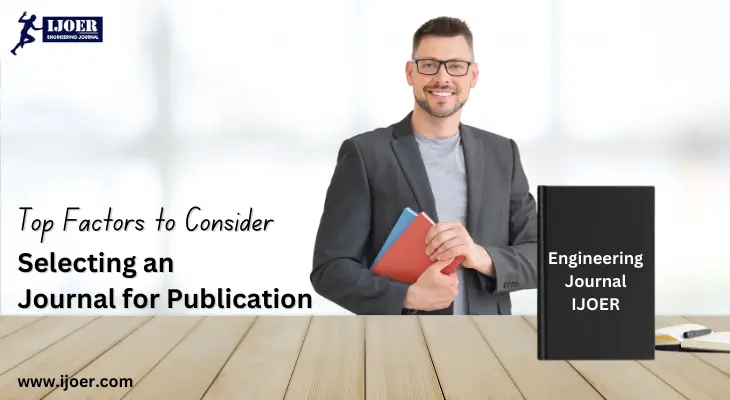
Publishing your research in an esteemed engineering journal is a significant step in your academic and professional journey. A well-chosen journal enhances your research visibility, credibility, and career opportunities. However, with thousands of journals available, selecting the right one can be confusing.
This guide will help you understand the key factors to consider before submitting your engineering research paper to a journal.
One of the first factors to check is the journal’s reputation and indexing in global databases. Indexing ensures that your research reaches a wider audience and is recognized within academic and professional circles.
Indexed journals are listed in reputable databases, making research more discoverable by scholars worldwide. Some of the most prestigious indexing databases include:
Tip: Always check the journal’s official website to verify its indexing claims. Some predatory journals falsely advertise being indexed.
A strong peer review process ensures that only high-quality research is published. Journals use different types of peer review systems:
If you need to publish your research quickly, the journal's publication timeline is crucial. Some journals have a long review process, while others offer fast-track options for an additional fee.
Tip: If you are submitting your paper for funding or academic requirements, check the journal’s publication frequency (monthly, quarterly, or annually).
Journals operate under two main models:
Tip: If you want your research to reach a global audience quickly, open-access journals are a better choice.
Each journal specializes in certain engineering disciplines. Submitting to a journal that does not match your research area increases the chances of rejection.
Tip: If your research is interdisciplinary, find journals that accept cross-disciplinary engineering studies.
The Impact Factor (IF) measures a journal’s influence based on how often its articles are cited. A higher impact factor indicates strong credibility.
Tip: Some new journals may not have an impact factor yet but can still be highly reputable based on indexing and peer review.
Many journals charge a fee for publication. These fees vary significantly:
Tip: If you are a student or a new researcher, look for waivers or discounts offered by journals.
IJOER (International Journal of Engineering Research & Science) is a trusted journal that meets key publishing criteria:
IJOER.com is an excellent choice for researchers seeking quick, reliable, and widely recognized publication opportunities.
Selecting the right engineering journal is essential for research impact and career growth. Consider key factors such as indexing, peer review quality, publication speed, open access, and APC fees before making a decision.
If you’re looking for a high-quality, fast, and credible journal, IJOER.com provides an excellent platform for engineering researchers worldwide.

|
Citation Indices
|
All
|
Since 2020
|
Citation |
2359 |
1680 |
h-index |
19 |
15 |
i10-index |
57 |
24 |
|
Acceptance Rate (By Year)
|
|
|
Year
|
Percentage
|
|
2023
|
9.64%
|
|
2027
|
17.64%
|
|
2022
|
13.14%
|
|
2021
|
14.26%
|
|
2020
|
11.8%
|
|
2019
|
16.3%
|
|
2018
|
18.65%
|
|
2017
|
15.9%
|
|
2016
|
20.9%
|
|
2015
|
22.5%
|